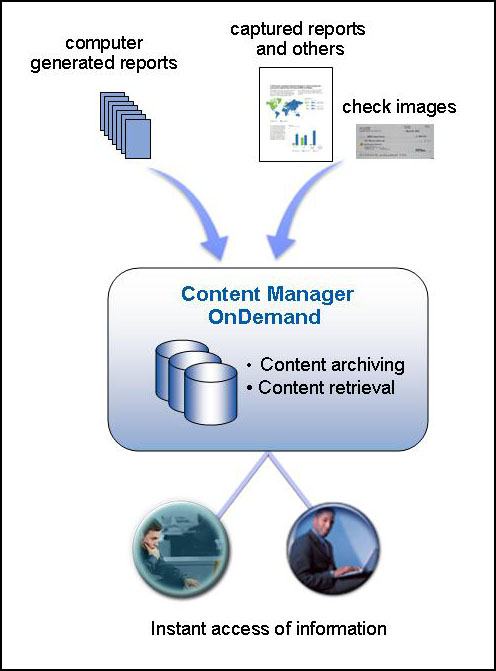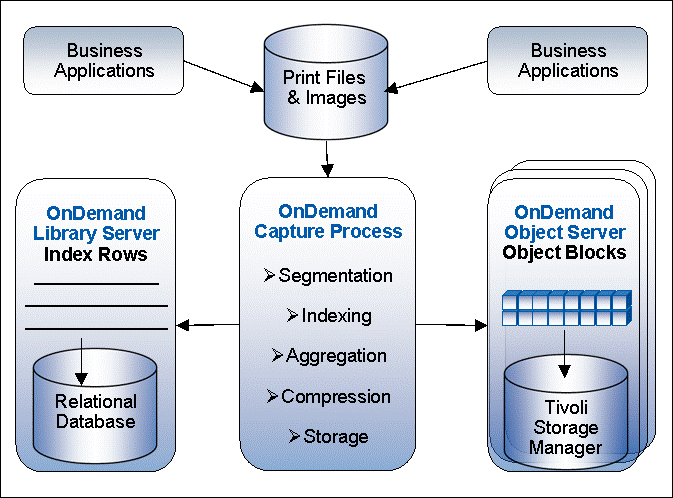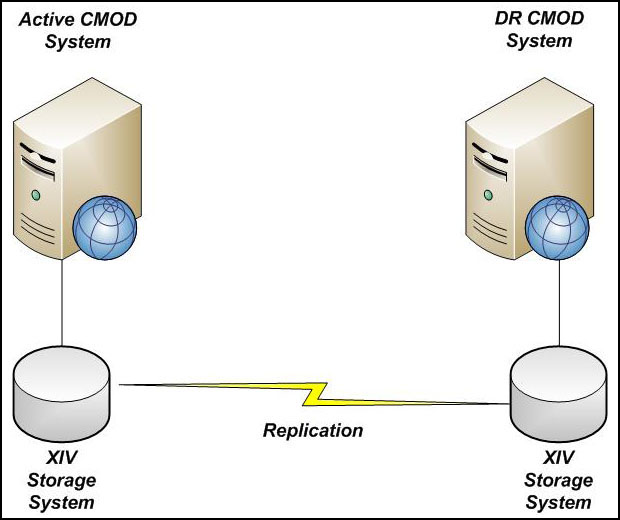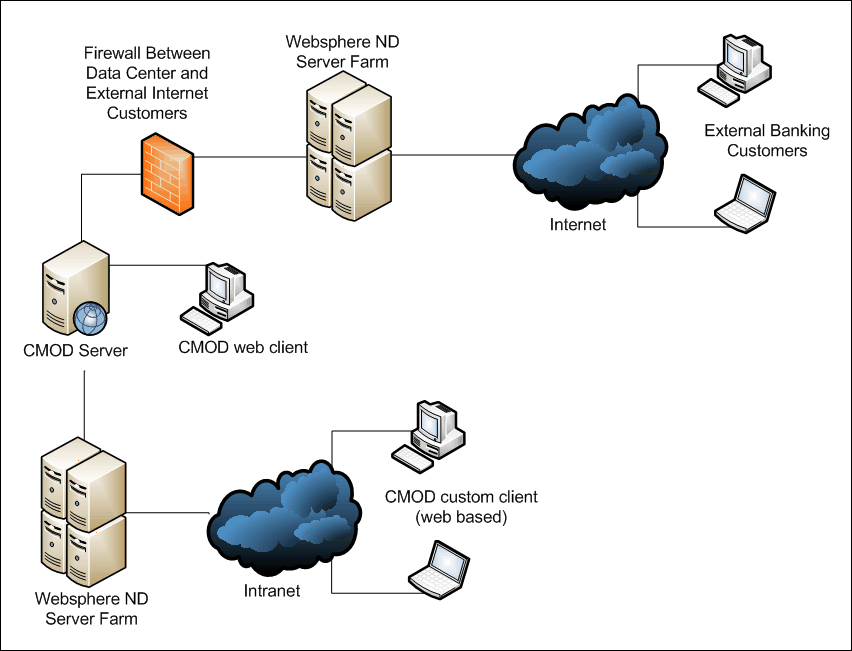Abstract
Using IBM® Content Manager OnDemand, you can create solutions that provide high-speed archival and retrieval of information, thus benefiting any organization requiring instant access to information, hardcopy replacement, or long-term archival of data. The Content Manager OnDemand solutions can support small office environments and large enterprise installations with hundreds to thousands of system users. The solutions can dramatically improve productivity and customer service in many businesses by providing fast access to information that is stored in the system.
The high speed content archival and retrieval solutions using IBM Content Manager OnDemand can archive content such as computer generated reports, captured reports, check images, and others. In addition, the IBM Content Manager OnDemand solutions can provide instant access to the archived content on demand, and in their original content format. This IBM Redbooks® Solution Guide explains, from a high-level view, how you can create high-speed content archival and retrieval solutions by using IBM Content Manager OnDemand.
Contents
Using IBM® Content Manager OnDemand, you can create solutions that provide high-speed archival and retrieval of information, thus benefiting any organization requiring instant access to information, hardcopy replacement, or long-term archival of data. The Content Manager OnDemand solutions can support small office environments and large enterprise installations with hundreds to thousands of system users. The solutions can dramatically improve productivity and customer service in many businesses by providing fast access to information that is stored in the system.
The high speed content archival and retrieval solutions using IBM Content Manager OnDemand can archive content such as computer generated reports, captured reports, check images, and others. In addition, the IBM Content Manager OnDemand solutions can provide instant access to the archived content on demand, and in their original content format. This IBM Redbooks® Solution Guide explains, from a high-level view, how you can create high-speed content archival and retrieval solutions by using IBM Content Manager OnDemand. The following figure provides an overview of such a solution.

Figure 1. Overview of the solution using IBM Content Manager OnDemand
Did you know?
The IBM Content Manager OnDemand family of products provides industry-leading solutions that did not come into existence overnight. Its roots originated in the mid-1980s, and since then added features and functions with an ever-expanding customer base. Today, IBM Content Manager OnDemand solutions are considered to be mission-critical assets in many businesses ranging from small businesses to the Fortune 500 enterprises.
Perhaps the most important fact to know about the evolution of IBM Content Manager OnDemand solutions is that the core product, Content Manager OnDemand, has been modified and enhanced over the years based on direct requests from IBM customers. The success of the products and its solutions are based on fulfilling customer requirements for the content archiving needs of their businesses.
Because the solution that is described in this Solution Guide can be applicable to other types of Content Manager OnDemand solutions, and for ease of reference, we refer to the "high-speed content archival and retrieval solution" as the "Content Manager OnDemand solution" in the rest of the guide.
Business value
To compete in today’s global business environment, businesses must increase both the efficiency and effectiveness of their operations. Conflicting business requirements, such as increasing productivity while reducing costs, and increasing personalization while expanding to larger customer bases, can be achieved only through more streamlined and coordinated processes. IBM Content Manager OnDemand solutions help address these issues by securely storing information and managing its retrieval on demand whenever and wherever it is needed.
Specifically, transaction-based content and documents are at the heart of any organization’s operations. They might directly touch every aspect of the business, including back-office analytics and reporting, e-commerce, and customer service. In many cases, content distribution through print documents remains the most common, expensive, and inefficient options for business users and customers.
The lack of reliable management, transformation, and delivery tools for critical business content has left it siloed across organizations, which causes several problems:
- Reduced user productivity that is related to complex search requirements, and inaccessible or unindexed data
- Reduced customer satisfaction because of a lack of self-service capabilities and slower customer service response times
- Higher content-management, printing, and storage costs
To address these business challenges effectively, you must make your business processes as efficient as possible and maximize user productivity while minimizing your risk and ensuring that your company meets regulatory-compliant mandates. You also need the capability to access transactional content in easily digested and shared forms that match user needs and skill sets, without requiring desktop installations or training for each user.
The Content Manager OnDemand solution enables your organization to gain control of your information by providing access to your business data, as needed and when needed, regardless of the size of the business or the hardware platform. The Content Manager OnDemand solutions improve your organization's bottom line by helping your business to become more efficient and responsive.
Solution overview
The Content Manager OnDemand solution processes computer output, captured reports, check images, and other documents. The solution extracts index information from this data, stores the index information in a relational database, and stores the data in the Content Manager OnDemand archive. It then enables users to quickly and easily search for the archived data.
Specifically, the Content Manager OnDemand solution is a robust report management solution that provides the following functions and features:
- Capture: Capture various data types from multiple sources through a batch capture system or interactively through custom built interfaces.
- Index and store: Index and store data for immediate retrieval.
- Search: Provide easy and efficient search so users can easily find the archived information.
- Integrate: Provide access through federated searches to other IBM Enterprise Content Management data and third-party products.
- View: Support multiple viewers for different data types, thus providing fast access for browsing and printing the retrieved data in its original content format.
- Distribute: Distribute data to selected users based on defined schedules.
- Manage: Expire or archive data based on defined policies.
- Archive: Provide data archives online, near-line, or offline, enabling rapid archiving of data to the storage system.
- Control: Control system and data access, allowing only authorized users to access specified data.
The solution also provides several indexing programs:
- The AFP Conversion and Indexing Facility (ACIF) can be used to index IBM z/OS® line data, ASCII data, and AFP files, collect resources that are necessary to view the reports, and convert line data files to AFP data.
- The IBM OS/390® indexer is a high performance indexer that can be used to index various data types and is available on both IBM z/OS and IBM AIX®.
- The IBM OS/400® indexer can be used to index various data types and is the most common Content Manager OnDemand indexer for IBM i spooled files.
- The Content Manager OnDemand PDF Indexer can be used to create index data for Adobe Portable Document File (PDF) files.
- The Content Manager OnDemand Generic Index File Format can be used to provide index data for almost any other type of data, such as HTML documents, word-processing documents, and TIFF files.
The Content Manager OnDemand solution comes with clients that run on workstations and communicate with the Content Manager OnDemand servers.
Each Content Manager OnDemand solution comes with one library server and one or more object servers. The library server manages a database of information about both the users of the system and the reports or data that is stored on the system. The object server manages the data on disk and tape storage devices. An object server can operate on the same server or node as the library server or on a different server or node than the library server. In some cases, based on system requirements, the library server and the object server are packaged as a single executable file.
Using the Content Manager OnDemand Clients, users can search for and retrieve reports that are stored on the system. Specifically, users can construct queries and search for reports, retrieve documents from Content Manager OnDemand, view, print, and fax copies or pages of documents, and attach electronic notes to the pages of a document. When a user submits a query, the client program sends a search request to the Content Manager OnDemand library server. The library server returns a list of the documents that match the query to the user. When the user selects a document for viewing, the client program retrieves a copy of the document from the object server where the document is stored, opens a viewing window, and displays the document.
Solution architecture
The solution architecture with key IBM Content Manager OnDemand components and their functions is shown in the following figure.

Figure 2. Solution architecture
External business applications create print files and images. The Content Manager OnDemand capture process performs data segmentation, indexing, aggregation, compression, and storage.
Content Manager OnDemand servers (a library server and one to many object servers, as described in the "Solution overview" section) manage control information and index data. In addition, the servers manage documents retrieval, resource group files, and process query requests from Content Manager OnDemand client programs. The documents can be on disk and tape storage volumes. New reports can be loaded into Content Manager OnDemand every day. Content Manager OnDemand can retrieve the latest information that is generated by application programs.
Content Manager OnDemand Clients, which are not shown in Figure 2, operate on various environments, including personal computers running on Windows, web browsers, and mobile devices.
Usage scenarios
Content Manager OnDemand solutions can be implemented for telecommunication companies, banks, other financial institutions, and so on. Here is a usage scenario for a large commercial bank, using a Content Manager OnDemand solution that was developed for a financial institution.
Company background information
The company is a large commercial bank that has branches in more than a dozen states and offices throughout the country. The bank has billions of assets under its control.
The following requirements were identified as deliverables for this project:
- A single archive large enough to support over 10,000 existing different reports and statements while allowing for growth of over 20% per year.
- Reduction of costs.
- Customer access to statements.
This bank had dozens of existing archive and reporting systems because of mergers over the years. Most of these systems were no longer supported or were costing the bank a significant amount of money to maintain. In addition, there was no central query capability to find documents or reports across the many archives. This bank wanted this ability in the new system.
The systems ranged from mainframe-based to stand-alone PCs. Support for these archive systems was across multiple departments within the bank. This support needed to be consolidated into a single support group and a single architecture.
The existing of multiple systems were too expensive to manage and maintain. Many systems used older optical-based hardware to manage data. In addition, many systems had reached capacity and were plagued by numerous outages. Some systems had reached their end of life support. The companies who produced these systems were no longer in existence. It was getting harder to find or acquire spare parts for the existing systems, some of which were PC-based.
The bank wanted to provide a service to allow customers to view their banking statements online. This system needed to support this capability.
- Internal web-based access to all data.
The bank wanted to eliminate the need to support PC-based software internally to provide searching and viewing capability. The bank’s goal was to support only basic internet browsers for searching and retrieving the report and statement data.
The implementation of Content Manager OnDemand involves many steps. Software was installed in four separate server environments: a development server, a quality assurance (QA) server, a production server, and a disaster recovery server. Workstations to be used by the application developers were set up with the Content Manager OnDemand administrative client along with the Windows client to test retrieval. Test web servers were also set up to begin development of the custom banking interface to Content Manager OnDemand and to test the custom client.
Installation and configuration
The Content Manager OnDemand software was installed on an IBM eServer™ pSeries 570 system that uses the following products:
- IBM AIX
- IBM DB2® UDB
- IBM Tivoli® Storage Manager
- Content Manager OnDemand for Multiplatforms
- IBM MVS™ download (Used for downloading reports from the JES Spool)
- IBM WebSphere® Application Server
- OnDemand Custom Client Services Offering
Each UNIX based product was installed on to local disk that is attached directly to the pSeries so that there was no requirement to activate each node individually. All configuration files were duplicated and installed on each individual node except for the Tivoli Storage Manager history and volume files, which were placed on mirrored disk. The following figure shows the implemented system architecture.

Figure 3. Implemented system architecture
From the client side, internal power users had the Content Manager OnDemand web client installed. These users included the internal group that needed to access the report and repurposed the data through a third-party software. Internal casual users were given access to the system using the Content Manager OnDemand custom client. This WebSphere application was installed on a number of WebSphere servers running in a Network Development (ND) environment. The final access method that was configured allows external banking customers to access their monthly statements from a web browser by using a custom application that was developed by the bank. This application was tied into the bank’s Internet Banking Portal.
The following figure shows the implemented client architecture.

Figure 4 Implemented client architecture
Integration
IBM Content Manager OnDemand solutions can be integrated with many IBM products and solutions to add additional functions and capabilities. Here are some examples.
Integration with IBM Enterprise Records
IBM Enterprise Records helps companies provide legally compliant records that meet government regulations during an inquiry that follows a corporate record policy file plan.
By integrating IBM Content Manager OnDemand solutions with IBM Enterprise Records, the integrated solution helps companies provide enterprise-level records management functions, thus making the archived documents (reports, checked images, and other type of content) compliant records, and enabling the documents to have event-based expiration.
Integration with IBM Datacap products
IBM Datacap products can capture incoming documents (through fax, email, or other methods), extract metadata from them, and expedite case processing, such as patient claims or other processes. For example, state and county courts might use document capture software to collect information quickly so paralegals, attorneys, and judges can review information for a pending case more efficiently, which eliminates delays in processing a case.
Supported platforms
IBM Content Manager solutions support multiple operating systems depending on the IBM Content Manager OnDemand editions:
- Content Manager OnDemand for Multiplatforms: Supports IBM AIX, HP-UX, Linux, Linux on IBM System z®, and Microsoft Windows.
- Content Manager OnDemand for i: Supports the IBM i operating system.
- Content Manager OnDemand for z/OS: Supports the IBM System z operating system.
Ordering information
Ordering information is show in the following table.
Table 1. Ordering part numbers and feature codes
| Program name | PID number |
| IBM Content Manager OnDemand for Multiplatforms Version 9.0 | 5724-J33 |
| IBM Content Manager OnDemand for z/OS Version 9.0 | 5697-CMD |
| IBM Content Manager OnDemand for i | 5770-RD1 |
Related information
For more information, see the following documents:
- IBM Content Manager OnDemand Guide, SG24-6915
http://www.redbooks.ibm.com/abstracts/sg246915.html - Implementing Content Manager OnDemand Solutions with Case Studies, SG24-7511
http://www.redbooks.ibm.com/abstracts/sg247511.html - IBM Content Manager OnDemand product page
http://ibm.com/software/products/en/ondemand - IBM Offering Information page (announcement letters and sales manuals):
http://www.ibm.com/common/ssi/index.wss?request_locale=en
On this page, enter Content Manager OnDemand, select the information type, and then click Search. On the next page, narrow your search results by geography and language.
Others who read this also read
Special Notices
The material included in this document is in DRAFT form and is provided 'as is' without warranty of any kind. IBM is not responsible for the accuracy or completeness of the material, and may update the document at any time. The final, published document may not include any, or all, of the material included herein. Client assumes all risks associated with Client's use of this document.
